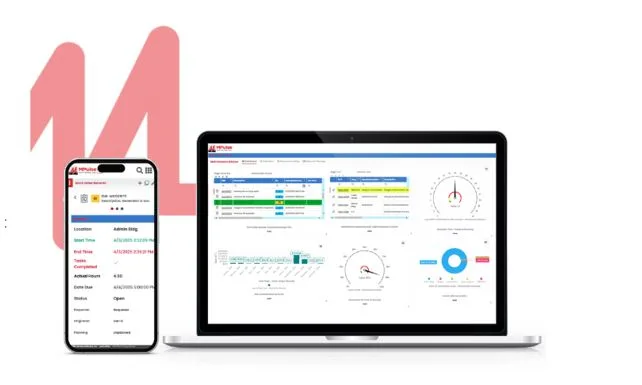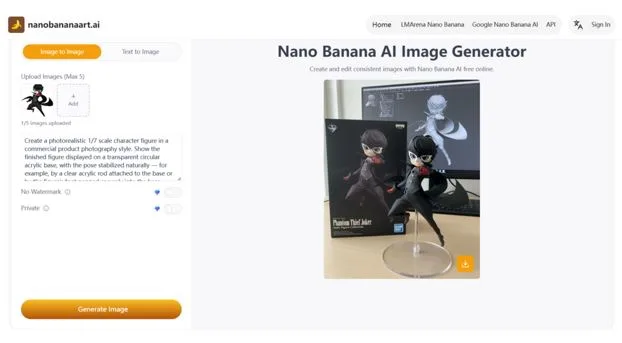Optimizing Home Office Tech with the Proper Cables and Accessories
The remote work revolution has turned spare rooms, dining tables, and corner recesses into professional workplaces around Australia. As much time is spent choosing the ideal laptop, monitor, or ergonomic chair, the hidden champions of a productive home office are usually the cables and accessories that tie everything together.
An actual optimized home office is not just about possessing the most current technology, it’s about having a workspace that is maximizing productivity, ensuring safety, and keeping you in the zone for what is truly important. What separates a working environment from an exasperating mess of wires frequently hinges on careful planning and the correct accessories.
Today’s remote workers work with multiple pieces of hardware, from laptops and external displays to tablets, smartphones, and peripherals. Getting the connectivity, power, and organization of these devices right needs careful planning with cables, switches, and safety features that most people ignore until something goes wrong.
The Foundation: Knowing Your Connectivity Requirements
Before getting into products and solutions, effective home office optimization starts with knowing your specific connectivity needs. Each remote worker has varied needs depending on their job, device choices, and space limitations.
Think about the equipment you use on a daily basis and how they must be integrated. A graphic designer may require several high-resolution monitors plugged into an industrious laptop, whereas a consultant may focus on switching easily between work and personal computers. Knowing these needs allows you to invest in the proper solutions instead of piling up unnecessary accessories.
The location and layout of your workspace also significantly impact your cable and accessory needs. A dedicated home office allows for permanent cable management solutions, while a shared space might require more flexible, temporary arrangements that can be easily reconfigured.
Power needs are worth special consideration in home office design. Several devices equal several power adapters, and not enough power outlets can become a safety issue or require you to keep switching connections. Designing in your power needs upfront avoids those hassles and keeps your workspace operational and secure.
Needed HDMI and Display Connectivity
High-definition screens are a necessity for remote working productivity, whether you’re participating in video calls, reviewing spreadsheets, or juggling several apps at the same time. Proper display connectivity solutions can significantly enhance your workflow productivity and ease eye strain.
HDMI cables remain the gold standard for connecting laptops to external monitors, offering reliable high-definition video and audio transmission. However, not all HDMI cables are created equal. Higher-quality cables support better resolutions and refresh rates, which becomes important when using 4K monitors or when precise color reproduction matters for your work.
The length of your HDMI cables is more important than most people understand. Longer cables tend to suffer from signal degradation, creating poor image quality or occasional connectivity problems. Having the appropriate cable length for your configuration—long enough to be comfortable but not excessively long guarantees the best performance.
USB-C to HDMI adapters are becoming increasingly relevant as newer laptops drop standard HDMI ports and opt for USB-C connectivity instead. These adapters enable you to attach external screens while keeping the sleek profile that newer laptops provide. Choose adapters that are compatible with your monitor’s full resolution and refresh rate capabilities.
For multi-monitor configurations, think about display splitters or adapters that enable you to connect multiple monitors onto one output. These solutions can span your desktop across multiple monitors, greatly expanding your workspace and productivity capabilities.
Power Management and Distribution
Efficient power management in your home office avoids the frustration of not having enough outlets and ensures electrical safety. Appropriate power distribution solutions guarantee that all your devices are provided with safe and stable power without posing any hazards or workspace clutter.
Quality power boards with surge protection serve as the foundation of good power management. Look for power boards with multiple outlets, USB charging ports, and built-in surge protection to safeguard your expensive equipment from power fluctuations. The investment in a quality power board pays dividends in device protection and convenience.
Think of power boards that have individual outlet switches, so you can switch power on and off to individual devices without having to unplug them. This comes in handy for devices that consume standby power or for equipment you’re not constantly using during the day.
Cable length is also relevant to power distribution. Power boards with more extended cables also allow for greater flexibility in terms of positioning so that you can position the power board in easy-to-reach places without having outlets out of reach. Never use extension cords with power boards, though, because this can pose safety issues and lower power quality.
Intelligent power boards with Wi-Fi enable you to remotely control and monitor your devices. These solutions have the ability to automatically switch off devices at specific times, monitor power usage, and even remotely enable or disable access when you’re not present in your office.
KVM Switches: The Multi-Device Solution
Keyboard, Video, and Mouse (KVM) switches are one of the least used but most powerful office accessories for home offices where there are multiple computers. They enable you to access several computers with a single keyboard, mouse, and monitor configuration.
The key benefit of KVM switches is workspace efficiency. Rather than having your desk cluttered with multiple mice and keyboards, or repeatedly plugging cables from device to device, a KVM switch offers effortless control of multiple computers at the touch of a button.
For professionals with private work and personal computers, KVM switches offer safe isolation while keeping things convenient. You can easily toggle between your work laptop and home desktop without having to physically remove cables or alter your workspace setup.
Today’s KVM switches support high-resolution monitors and many come with extra functionality such as USB hub capability, so you can share peripherals such as a printer, external hard drive, or webcam among multiple computers. This shared capability eliminates the need for duplicate peripherals and streamlines your workspace.
When selecting a KVM switch, consider the number of computers you need to support, the resolution requirements of your displays, and any additional features that would benefit your workflow. Some KVM switches offer hotkey switching, allowing you to change between computers using keyboard shortcuts rather than physical buttons.
Cable Management: Organization and Safety
Effective cable management turns disorganized working spaces into tidy, professional ones while delivering vital safety advantages. Cable management is more than mere looks—it avoids trip hazards, shields cables against damage, and greatly facilitates maintenance and troubleshooting.
Under-desk cable organizers maintain power and data cables tidy and concealed. Cable trays, wire mesh organizers, and cable clips with adhesive offer different methods for guiding cables along desk edges and legs. The devices avoid entanglement of cables and facilitate easy access to a particular cable when required.
Desk grommets and cable pass-throughs offer tidy cable entry points while keeping cables safe from abrasive desk edges. These easy accessories significantly enhance your workspace’s appearance while adding cable life by avoiding abrasion and damage.
For longer cable runs across rooms or between furniture pieces, proper protection becomes essential. Cables lying across walkways create tripping hazards and are susceptible to damage from foot traffic. This is where protective solutions become crucial for both safety and cable longevity.
Cable sleeves and spiral wrap offer cable bundle protection while also organizing them. These are suitable for organizing multiple cables which travel in tandem, including the power, data, and peripheral cables that usually connect to your main workstation.
Floor Cable Protection and Safety
When cables need to traverse walkways or busy areas in your home office, adequate floor protection becomes necessary both for safety and equipment protection. Open cables are serious tripping hazards and prone to damage from foot traffic, rolling chairs, and cleaning efforts.
The best approach to cable protection on floors is the use of specialized protective covers specifically made for this function. These covers establish safe routes for cables and give them a smooth, stable surface that will not pose a new tripping hazard.
Good cable floor covers are made to lie flat on the floor surfaces and accommodate enough space for the cables underneath. They usually have ramped edges that provide smooth transitions so the covers themselves will not be tripping hazards.
Various cable floor cover types are best suited for varying environments and cable loads. Heavy-duty covers can support rolling office chairs and periodic foot traffic, whereas lighter covers are ideal for areas of low traffic. Refer to your particular usage habits when choosing the right protection.
Installation of cable floor covers must be easy, with possibilities including adhesive backing, weighted designs, or interlocking systems creating longer covered pathways. The most suitable installation method will vary based on your flooring and whether you want permanent or temporary cable protection.
Wireless Solutions and Connectivity
Although cables are still necessary for most uses, wireless options can eliminate cable clutter and offer more freedom in your home office design. Knowledge of when to utilize wireless over wired connections optimizes performance and ease of use.
Wireless keyboards and mice do away with USB cables while offering liberty of movement and cleaning up deskspace. Wireless peripherals today provide great battery life and responsiveness that is comparable to their wired cousins for most office use.
Wireless charging stands and plates give easy power for smartphones and other compatible mobile devices with no extra cables. These options are well-suited for devices you must use regularly during the day, like phones employed for work calls or alerts.
Wi-Fi extenders and mesh networking products provide consistent wireless coverage around your home office, minimizing reliance on wired internet connectivity for laptops and mobile devices. Resilient wireless connectivity becomes particularly crucial for video conferencing and cloud applications.
Be aware that wired connections usually deliver better performance for bandwidth-hungry applications. External monitors, network storage, and main internet connections usually appreciate wired connections delivering consistent, high-speed performance.
Ergonomic Considerations and Accessories
Accessories you use for your home office should facilitate healthy working postures and minimize physical effort. Ergonomic factors become increasingly vital as telecommuting extends over longer durations and employees spend more time at their home workstations.
Monitor arms and stands enable you to place displays at their most comfortable heights and angles, eliminating neck and eye strain. Monitor arms and stands also clear space on your desk and tend to come with cable management capabilities that route display cables out of the way.
Laptop stands raise mobile computers to more ergonomic viewing positions while leaving room below for keyboards and other equipment. Most laptop stands also feature integrated cable management and ventilation capabilities that enhance both ergonomics and device performance.
Keyboard trays and ergonomic accessories support good wrist and arm positions during long typing sessions. These accessories are most effective when used in conjunction with good cable management that prevents connecting cables from reaching across the work surface and interfering with the natural path of the arm.
Document holders and device stands place reference materials and secondary devices at comfortable viewing angles, minimizing the necessity for uncomfortable neck postures and constant head movement leading to fatigue and strain.
Troubleshooting and Maintenance
Even the most carefully planned home office configurations need occasional work and maintenance. Knowing what troubles might occur and how to fix them ensures productivity and keeps minor issues from snowballing into major interruptions.
Cable connections are frequent causes of technical frustrations, ranging from loose connections that create intermittent woes to frayed cables that work not at all. Checking cable connections regularly and using correct handling procedures prolongs cable life and avoids connectivity issues.
Power issues are usually caused by overloaded circuits or malfunctioning power boards. Knowing your power requirements and installing proper power distribution equipment avoids these issues while safeguarding your precious equipment from power-related faults.
Dust and dirt buildup on equipment and cable connections can influence equipment performance and cable connections. Keeping your workspace, cable management areas, and connection points clean ensures that they always operate at optimum performance and maximize equipment lifespan.
Store spare cables and adapters for frequent connection types found in your office. Having spares of HDMI cables, USB cables, and power adapters keeps minor failures from interfering with your work while ordering replacements.
Future-Proofing Your Setup
Technology continues evolving rapidly, and your home office accessories should be selected with future needs in mind. Investing in quality, versatile accessories reduces the need for frequent replacements and ensures compatibility with future devices.
USB-C connectivity is becoming increasingly standard across devices, from laptops and tablets to smartphones and peripherals. Choosing accessories that support USB-C connections ensures compatibility with future devices while often providing faster data transfer and charging capabilities.
Greater resolution monitors and higher refresh rates keep becoming more prevalent and affordable. Choosing cables and accessories that accommodate these greater specifications allows your setup to stay compatible as you update monitors and devices.
Wireless standards also improve, as newer Wi-Fi standards allow for quicker speeds and improved reliability. Having your wireless infrastructure able to handle these improvements keeps performance at its best as your devices and your connectivity needs change.
Modular and upgradeable accessories provide better long-term value than fixed solutions. KVM switches with expandable ports, modular cable management systems, and
configurable power distribution solutions adapt to changing needs without requiring complete replacement.
Designing an optimized home office involves careful attention to cables, accessories, and safety features that work with your productivity and health. A synergistic mix of connectivity solutions, power management, and cable management turns any space into a professional, productive space.
The cost of quality accessories is rewarded in less frustration, increased productivity, and better safety. From solid HDMI connections and effective power distribution to good cable organization and floor covering, every aspect adds up to a work area that aids your career success.
Keep in mind that optimization is a continuous process, not a one-time installation. As your requirements change and technology evolves, periodically reviewing your accessories and making strategic replacements assures your home office remains up to par with your needs.
The contemporary home office is more than a workspace to simply perform tasks; it’s a working area that should instill confidence and be conducive to your best work. By taking the time to invest in the proper cables, accessories, and safety measures, you establish a workspace that not only suits your needs today but also evolves to meet your needs tomorrow.




